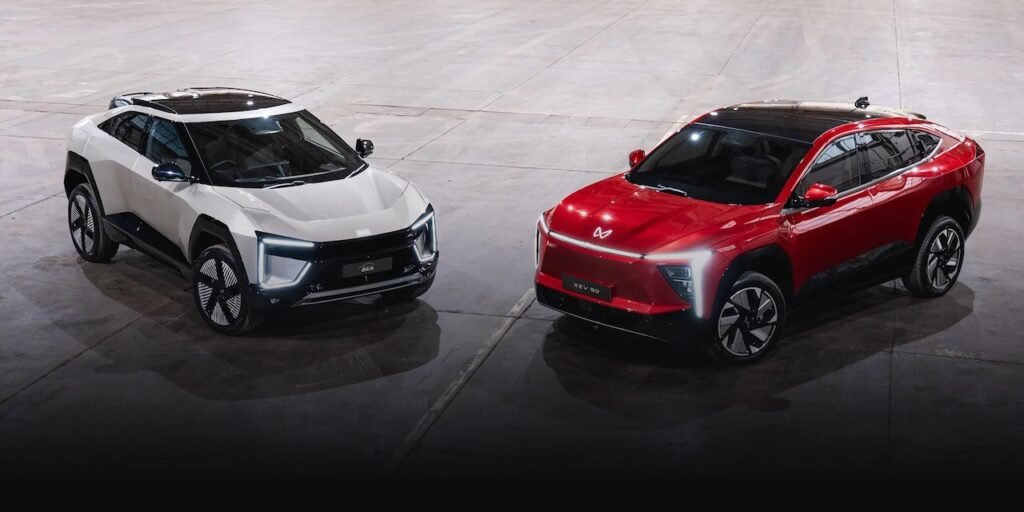India’s Upcoming SUV market is on the verge of a historic transformation as major automakers gear up for a new wave of 7-seater SUV launches. These models aim to challenge reigning champions like the Mahindra XUV700 and Tata Safari by introducing new powertrains, futuristic features, and broader choices to one of the country’s most competitive automotive segments.
The Upcoming SUV: India’s Growing Love for 7-Seaters
SUVs now make up a dominant share of India’s passenger vehicle sales. Within this booming category, 7-seater SUVs and MPVs have emerged as the go-to choice for families seeking space, safety, and comfort without compromising performance. Automakers such as Mahindra, Tata, Hyundai, MG, Renault, and Nissan are now betting big on this format with upcoming models that promise to blend flexibility and technology at competitive price points.
Mahindra XEV 7e: India’s First Mass-Market Electric 7-Seater SUV
Mahindra is taking the electric route with its much-anticipated XEV 7e, the first mass-market 7-seater electric SUV built on the INGLO skateboard platform. It’s essentially the EV counterpart to the XUV700, expected to debut by late 2025.
The XEV 7e will offer two battery options, 59 kWh and 79 kWh, with rear-wheel drive as standard. The top trims could feature an all-wheel-drive setup, setting new benchmarks for performance and range in the three-row EV category. This SUV aims to redefine electric mobility in the large-SUV segment while delivering spacious, tech-laden interiors that families will appreciate.
Mahindra XUV700 Facelift: Sharper, Smarter, More Premium
Mahindra isn’t just focusing on EVs. Before the XEV 7e arrives, the company plans a comprehensive facelift of its best-selling XUV700. Expected by early 2026, the facelift will feature exterior tweaks, including a redesigned grille, reworked bumpers, and updated headlamps.
Inside, Mahindra will introduce a new triple-display digital dashboard similar to what’s seen on the XEV 9e. The SUV is expected to include second-row ventilated seats, auto-dimming IRVM, front parking sensors, and a Dolby Atmos sound system. It will continue with the 2.0L turbo-petrol and 2.2L diesel engines, both paired with 6-speed manual and automatic transmissions, aimed squarely at maintaining its lead against the Tata Safari and the Hyundai Alcazar.
MG Majestor: A Full-Size Hybrid Powerhouse
The MG Majestor, a facelift of the MG Gloster, is ready to hit showrooms by late 2025. Inspired by the international Maxus D90, the Majestor will feature a refreshed design, updated interiors, and a formidable 2.0-litre twin-turbo diesel engine outputting 216 bhp and 479 Nm.
Its 8-speed automatic transmission and optional 4WD setup promise superior driving dynamics. Positioned as a full-size luxury SUV, it offers the combination of power, space, and sophistication expected to rival even premium models like the Toyota Fortuner and Mahindra XUV700.
Hyundai’s New 7-Seater Hybrid SUV: Raising Efficiency Standards
Hyundai, long trusted for its quality and after-sales service, is reportedly developing an all-new 7-seater hybrid SUV positioned above the Alcazar. Internally codenamed “Ni1i,” this model will use a hybrid drivetrain borrowed from the upcoming Creta, blending efficiency with innovative performance technology.
Expected in 2027, Hyundai’s offering is aimed at buyers seeking low running costs alongside strong brand reliability and futuristic design. While details remain under wraps, it is likely to take on the Safari and XUV700 with its hybrid advantage.
Renault Boreal: French Design with Indian Roots
Renault’s Boreal, a derivative of the Dacia Bigster, is one of the most eagerly awaited global models to enter India. Built on the CMF-B modular platform, the Boreal will be a 7-seater designed specifically for emerging markets like India.
The SUV will likely feature a 1.3L turbocharged petrol engine with a 6-speed manual or 7-speed dual-clutch transmission. With its muscular body, large dimensions, and hybrid-ready architecture, the Boreal is set to clash directly with the XUV700, Safari, and Hyundai Alcazar when it debuts in late 2026.
Nissan 7-Seater SUV: The Big Comeback
Nissan plans to re-enter the SUV race in India with an all-new 7-seater model built on the same CMF-B platform as the Renault Boreal. Sharing key mechanical elements with Renault but boasting a distinct design language, the Nissan SUV aims to capitalise on brand heritage and reliable engines.
It will likely use a 1.3-litre turbo-petrol engine, with both manual and automatic options. Priced in the ₹15–25 lakh range, Nissan’s re-entry hopes to add competitive diversity to the crowded three-row SUV market.
Maruti Suzuki Grand Vitara 7-Seater: Practical and Efficient
Maruti Suzuki will expand its Grand Vitara lineup with a 7-seater version expected by the end of 2025. The SUV will likely retain the 1.5L strong-hybrid and naturally aspirated petrol engines but feature slight design modifications to differentiate it from its 5-seater sibling.
With ADAS integration and potential CNG compatibility, Maruti’s entrant focuses on practicality, fuel efficiency, and everyday usability. Its pricing, expected around ₹14–18 lakh, makes it a potential hit among large Indian families.
Volkswagen Tayron: Premium European Alternative
Volkswagen is expected to introduce the Tayron seven-seater SUV to India by 2026. It will come powered by a 204 bhp, 2.0-litre turbo-petrol engine mated to a 7-speed DCT gearbox. Offering German build quality, a plush interior, and advanced driver assistance systems, the Tayron promises to be a refined yet capable contender against the XUV700 and Safari.
Honda 7-Seater Hybrid SUV: The Sophisticated Challenger
Honda’s new 7-seater SUV will ride on the PF2 modular architecture, compatible with hybrid systems, and will arrive in 2027. This SUV will emphasise fuel economy, reliability, and comfort, traditional Honda strengths, while adding family-friendly practicality. Its hybrid powertrain will align it with next-gen eco-conscious SUVs like Hyundai’s hybrid model.

